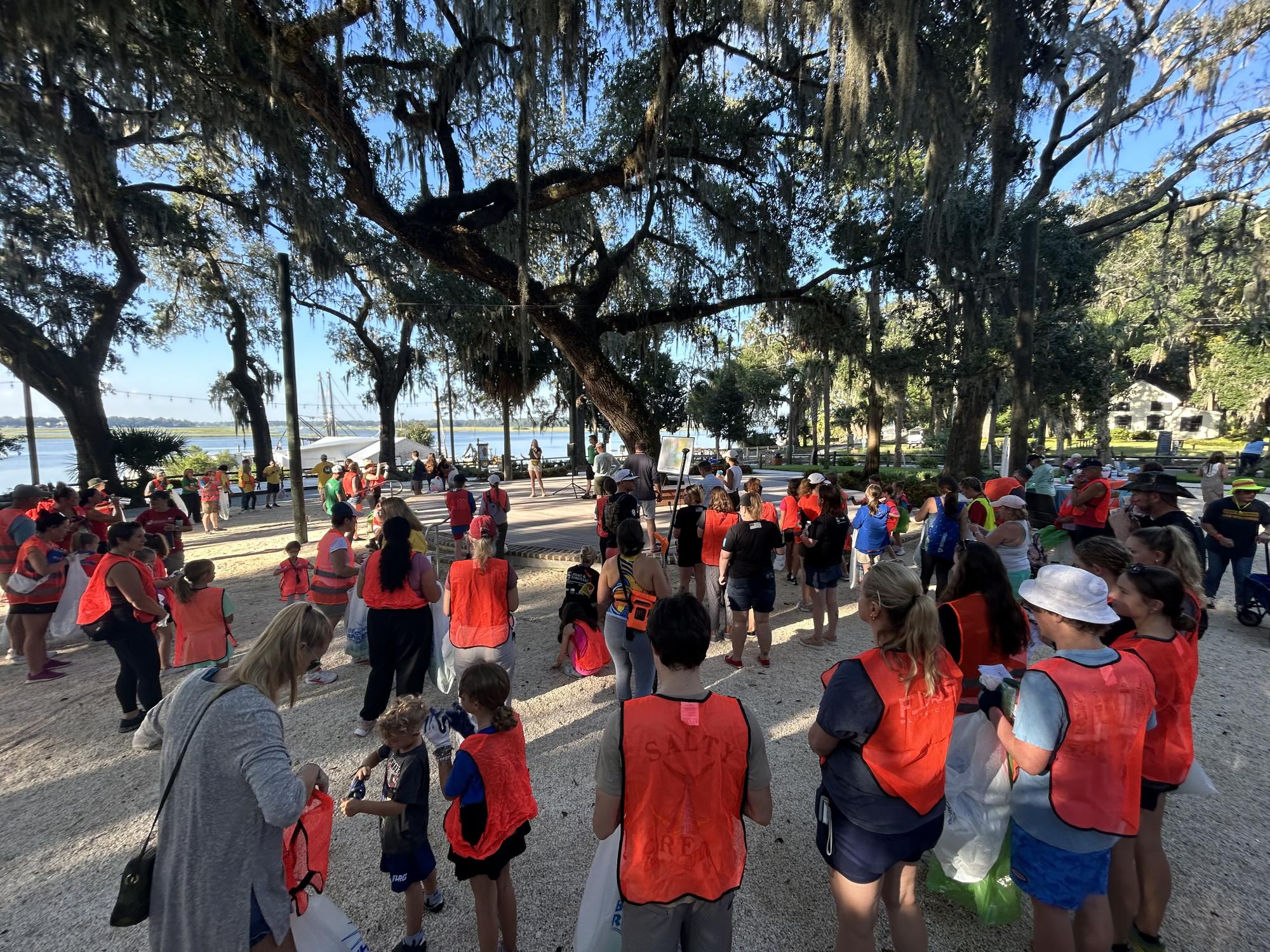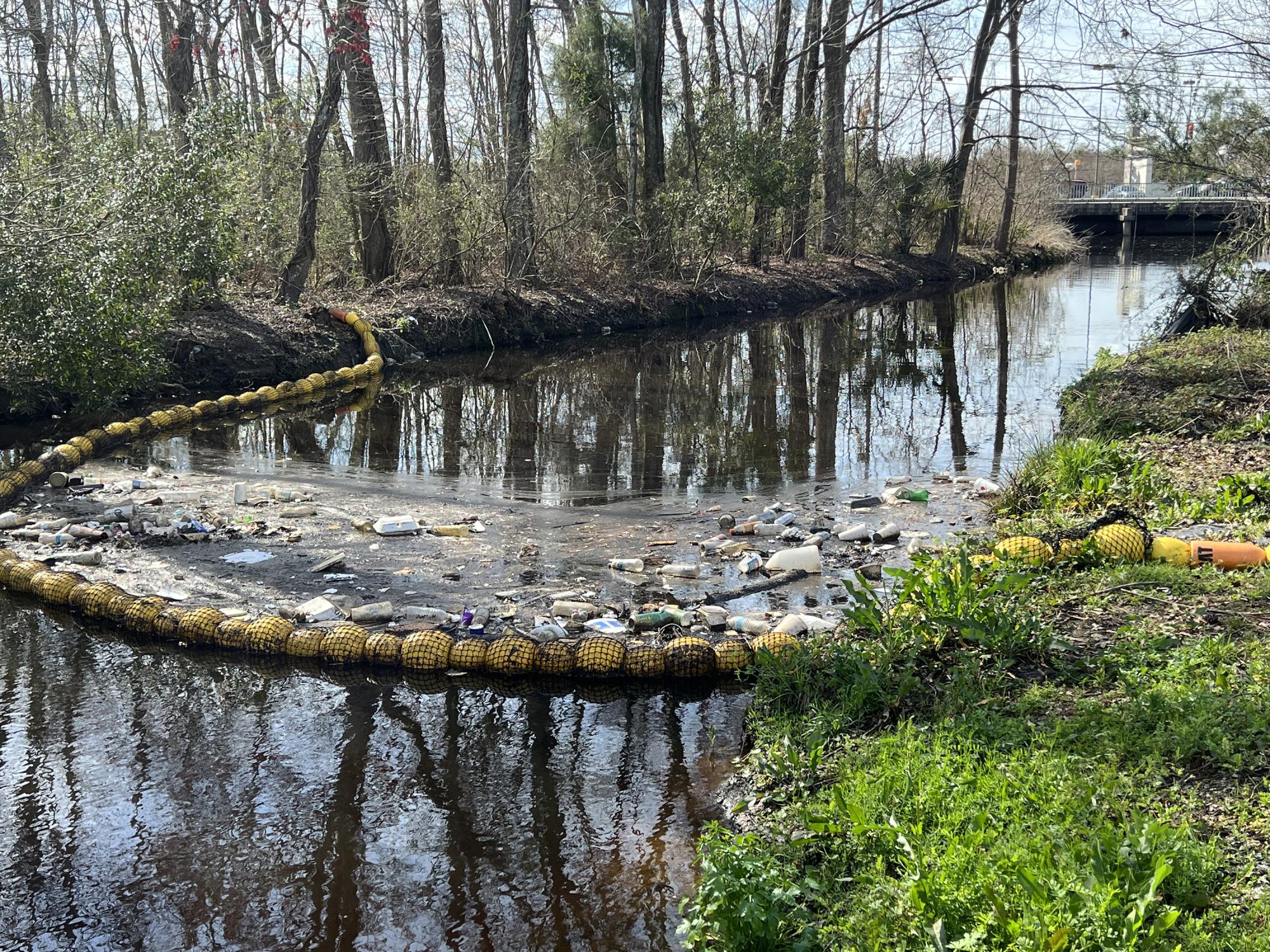Clean waterways are essential for cities and towns, affecting everything from tourism to economic development and quality of life issues.
In Bluffton, leaders like to say the May River, a tidal river with no freshwater source at its headwaters, has been the figurative and literal backbone of the Lowcountry town since its establishment in the 1800s.
“We have high-salinity waters that result in expansive salt marshes, and it's an oasis for oysters, crabs and fin fish,” said Beth Lewis, Bluffton’s water quality program manager. “So it's important to us both historically and culturally, as well as the economic impacts that it provides to the community.”
Working to improve its water quality — especially after the state of South Carolina downgraded the May River’s shellfish harvesting classification in 2009 — is an important mission for the town.
South Carolina’s shellfish sanitation program monitors shellfish areas to ensure that harvested oysters meet health and environmental quality standards. In 2007, the SC Department of Health and Environmental Control — forerunner of the present-day SC Department of Environmental Services — reported to Bluffton that the fecal coliform levels were increasing in the May River. In 2009, the May River received its first-ever shellfish harvesting classification downgrade, meaning that shellfish harvesting was restricted in that portion of the river.
Fecal coliform bacteria are an indicator of water quality degradation, and concentrations of the bacteria can offer clues to problems such as untreated sewage from failing septic systems or wildlife.
In 2009, the Town of Bluffton developed the May River Watershed Action Plan in partnership with Beaufort County and its community stakeholders. Adopted by town council in 2011, the document aims to restore and protect water quality in the May River, focusing on what Lewis called “the four P’s” — policies, programs, projects and partnerships.
In 2021, after the town had continuously collected data and as scientific knowledge on stormwater management had grown, the town updated the action plan to develop a stormwater model in the May River headwaters to understand the movement of fecal coliform better.
“It helps us understand how the bacteria are getting to the river,” Lewis said. “We're not necessarily focused on the impairment in the river, but we're interested in what's happening in the watershed.”

The town uses microbial source tracking to help look for human sources, including sampling to determine if failing septic systems are contributing to the impairment. That data is used by the town to drive its septic-to-sewer conversion program, which promotes sanitary sewer extension projects.
The town is now implementing eight projects recommended in the 2021 update of the action plan, including an impervious-surface restoration program that identifies areas with hard pavement where water runs off rather than soaking into the ground. Lewis said education remains a big part of what Bluffton does, helping residents and contractors understand ways they can prevent stormwater pollution through individual actions.
The initial shellfish harvesting restrictions from 2009 remain in place today — evidence of the long-term commitment needed to address water quality.
“Obviously our impairment still exists today, so it doesn't happen overnight,” she said. “We are just continuously taking those lessons learned to make more informed decisions.”
Along with the other efforts, hundreds of volunteers help clean up the May River during two large river cleanups a year. Nicole Wright, the town’s stormwater technician, spearheads the cleanup events.
“We get a bunch of groups together. We partner with a local school and we bring out some educational partners,” Wright said. “So, while people are picking up litter, they're also learning about the community around them and what they can do to be better stewards to the environment.”
At the last event, Bluffton collected 1,710 pounds of waste and were able to divert 479 pounds of that by recycling plastic, aluminum, glass and cardboard.
Other cities and towns around the state have partnered with PalmettoPride, South Carolina’s anti-litter organization, to install Watergoat devices in their waterways as a way to help divert and collect litter.
The Watergoat is a litter entrapment system that places a floating net across a river or stream to act as a barrier to catch trash before it moves downstream, said Joseph Berry, special projects manager for PalmettoPride. Once the litter is caught, it can be removed for proper disposal.
“The Watergoat is not as invasive as other systems, and we feel it is easier to manage in collecting litter from the waterway,” Berry said.

PalmettoPride has worked with municipalities, counties and other organizations through the state to deploy the devices, with 13 installed and more planned.
“Typically, organizations and local governments reach out to us about the system and we work with them to complete the application and get scheduled for a setup. We are able to provide the system, with the understanding that the local organization will maintain the Watergoat once installed,” he said. “Maintenance is low effort for the system and only requires regular cleaning out to ensure it as effective as possible.”
One of the municipalities to take advantage of the program is Florence, where a Watergoat was installed on Gully Branch in Timrod Park, using Keep Florence Beautiful grant funding from PalmettoPride.
Geraldine Cuypers, a board member of Keep Florence Beautiful and the former discharge stormwater compliance inspector for the City of Florence, said placing the Watergoat near the park was an important way to spread the word about littler.
“People walk in that area in Timrod Park, and they can see the volume of trash that would go into our waterway,” she said.
She said trash will get swept into the waterways, especially after heavy rainfalls. The main items picked out of the Watergoat by the city’s stormwater compliance group are plastic and foam single-use items, along with cigarette butts.
“It’s quite a heavy device, and it has a chain on the bottom that goes down a foot or two, so fish and stuff can still go under. But it’s cool because the turtles also get on top of it and sunbathe,” Cuypers said.
The SC Department of Environmental Services also identified the James Island Creek Watershed as an impaired waterbody due to high levels of fecal bacteria. The Town of James Island, the James Island Public Service District, Charleston Water System and state agencies and representatives are working to improve the water quality in the creek, said Ashley Kellahan, district manager for the James Island Public Service District.
The town is partnering with the district to work on a public sewer expansion, she said.
“Part of our plan to combat this issue involves connecting 185 property owners to the public sewer system and properly abandoning septic tanks on parcels lying on or near this watershed,” Kellahan said.
The district, who operates the wastewater system, received an $8.7 million grant through the South Carolina Infrastructure Investment Program, and construction, which began in October 2024 and is still underway. The town and district also received $3.2 million to help cover the cost of tying in residents to the public sewer system.
Kellahan said the district also partners with the town on pet waste stations around James Island, which feature pet waste bag dispensers and a can that is emptied on the regular garbage collection route. The program started in 2020, and an estimated 4 tons of pet waste was properly disposed in the first year – waste that did not end up in drainage systems and waterways, she said.
